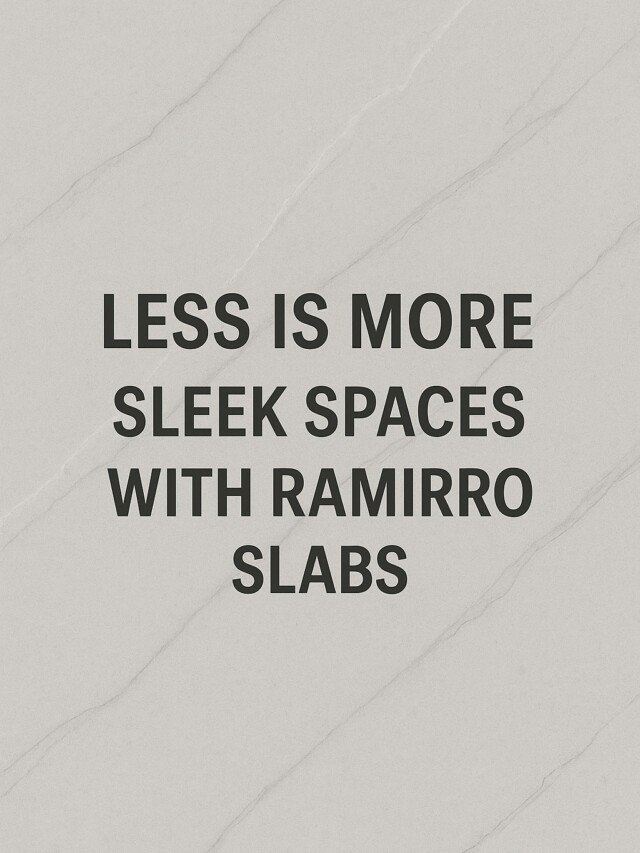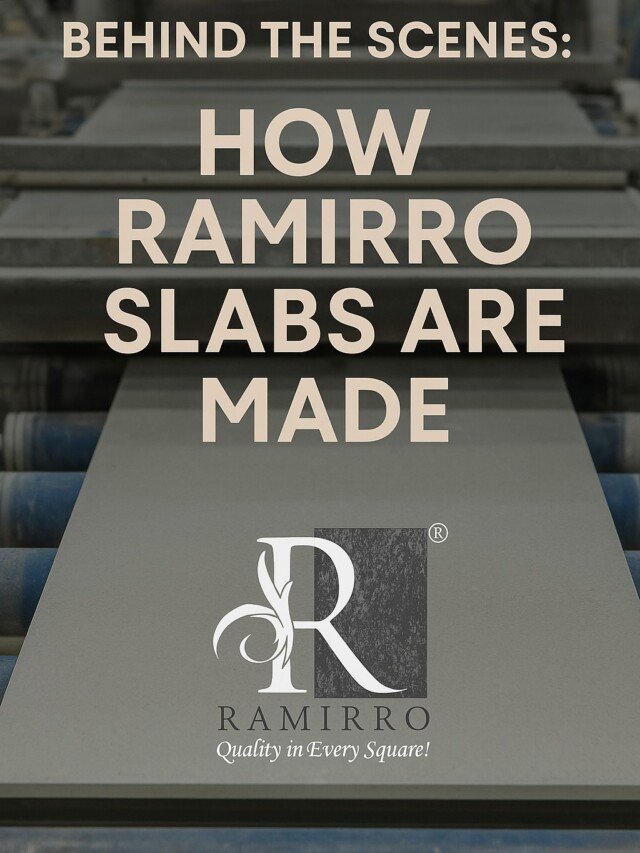When it comes to designing the perfect space, even the smallest details can make a substantial difference. One of these details is often overlooked but significantly impactful – grout color. Grout color can influence the overall appearance and ambiance of a room, especially when paired with specific tile colors. In this guide, we will delve into the art and science of choosing the right grout color to complement your tiles and create the desired mood for your living space.
Here in this article we will see
- How to choose grout color
- Which is right tiles and grout Color Combination
- How to combine grout colors and tiles
- Where to start planning a color palette for grout & tiles.
Understanding the Basics:
What is grout?
Grout is a dense, fluid-like mixture of cement, water, and sometimes additives (such as sand or fine gravel) that is used to fill gaps, spaces, and joints between tiles, bricks, or stones. It plays a crucial role in the construction and finishing of various structures, particularly in the context of tiling and masonry work.
Why is grout used?
Here are the primary purposes and functions of grout:
- Fill and Seal Gaps: Grout is used to fill the gaps and spaces between tiles, bricks, or stones to create a seamless and aesthetically pleasing surface. It prevents dirt, debris, and moisture from accumulating in these gaps.
- Stabilize and Support: Grout provides stability and support to the tiles or stones by filling the spaces beneath them. It helps distribute the weight evenly and reduces the risk of tiles cracking or shifting.
- Enhance Aesthetics: Grout can significantly impact the appearance of a tiled or masonry surface. It comes in various colors and can be chosen to complement or contrast with the tiles, enhancing the overall design and aesthetic of the installation.
- Waterproofing and Durability: Grout helps make the surface more resistant to water penetration, which is especially important in areas prone to moisture, such as bathrooms and kitchens. This waterproofing aspect helps enhance the durability and longevity of the installation.
- Prevent Chipping and Cracking: Grout acts as a cushion between tiles, reducing the risk of chipping or cracking due to impact or movement.
- Ease of Cleaning: Grout makes it easier to clean and maintain the tiled surface by ensuring that dirt, spills, and other substances don’t get trapped between the tiles.
Types of Grouts
There are different types of grout, including cement-based grout, epoxy grout, and urethane grout, each with unique properties and applications depending on the specific requirements of the project. The choice of grout type will depend on factors such as the type of tiles, the location of the installation, the expected foot traffic, and desired aesthetics.
- Cement-Based Grout:
- Made from a mixture of cement, sand, and water.
- Commonly used for most tile applications.
- Available in sanded and unsanded varieties.
- Sanded Grout:
- Contains fine sand, providing strength and reducing shrinkage.
- Used for wider joints (typically 1/8 inch or larger).
- Unsanded Grout:
- Smooth texture, ideal for narrower joints (less than 1/8 inch).
- Suitable for polished or delicate tiles to prevent scratching.
- Epoxy Grout:
- Consists of epoxy resins and a filler powder.
- Highly durable, stain-resistant, and water-resistant.
- Ideal for areas prone to heavy use, high moisture, or chemical exposure.
- Urethane Grout:
- Made of urethane resins and a filler powder.
- Stain-resistant, flexible, and doesn’t require sealing.
- Suitable for both interior and exterior applications.
- Acrylic Grout:
- Contains acrylic additives for improved flexibility and adhesion.
- Resistant to moisture and can be used both indoors and outdoors.
- Typically used in areas where a certain level of flexibility is desired.
- Non-Sanded Cement-Based Grout:
- Similar to unsanded grout, made from cement and additives.
- No sand particles, suitable for very narrow joints and delicate tiles.
How to choose Grout Color?
Here are three things to follow while choosing grout color:
- Finding Functionality and purpose of the space
- Set the Mood you want to create
- Choosing Color that help to achieve that mood
For Example:
- Bathrooms: For bathrooms, you might want a clean and fresh look. Light grout colors like white, beige, or light gray can achieve this and also make the space appear larger.
- Kitchen: Kitchens often benefit from grout colors that are stain-resistant and easy to maintain. Neutral tones like gray or taupe work well and blend seamlessly with various kitchen designs.
- Living Room: Grout in the living room should complement the overall decor. Depending on your style, you might opt for bold contrasts or subtle complements.
Setting the Mood With Colors:
Color has a profound impact on our emotions and the mood of a room. Here are some popular grout color choices and the moods they can create:
- Warm Tones (e.g., Reds, Oranges, Yellows): Energizing, inviting, and cozy. These colors can make a space feel warmer and more vibrant.
- Cool Tones (e.g., Blues, Greens, Purples): Calming, soothing, and relaxing. Cool tones often create a sense of tranquility and spaciousness.
- Neutrals (e.g., Whites, Grays, Browns): Versatile, timeless, and elegant. Neutrals can complement any design and provide a clean, classic look.
Choosing Colors to Achieve the Desired Mood
Now that you understand the mood associated with different colors, it’s time to choose the perfect grout color for your project:
- Contrast for Drama: If you want to create a bold statement, consider contrasting the grout color with your tiles. Dark tiles with light grout or vice versa can create a striking effect.
- Blend for Harmony: To achieve a harmonious look, choose a grout color that closely matches the tile color. This creates a seamless appearance and allows other design elements to shine.
- Highlight with Light/Dark: Light-colored grout with light tiles can make a room feel more spacious, while dark grout with light tiles can add depth and contrast.
Technical Perspective for Choosing Grout Color
Understanding Color Theory in Depth
Color theory is a fundamental concept in design, teaching us how colors interact, complement, and contrast with each other. Architects and interior designers use color theory to create harmonious and visually pleasing spaces. Understanding primary, secondary, and tertiary colors, as well as concepts like analogous, complementary, and triadic color schemes, provides a solid foundation for making informed grout color choices.
Color Equals Moods, Emotion – Choosing Color Palette
Color is a powerful tool that speaks to our emotions and influences our moods. The colors we choose for our living spaces, clothing, and even the products we buy can have a profound impact on how we feel and how we perceive the world around us. Let’s delve into the fascinating world of color psychology and discover how different colors can evoke a range of emotions and set various moods. Here are some common colors assiocated with different vibes
- Red: Passion and EnergyRed is a color associated with strong emotions like love, passion, and energy. It can evoke excitement and stimulate the senses, making it a popular choice for creating a lively atmosphere.
- Blue: Calm and SerenityBlue often brings about feelings of calmness, serenity, and stability. It’s a color that’s commonly used to create a relaxing environment and promote tranquility.
- Yellow: Happiness and OptimismYellow is often linked with feelings of happiness, warmth, and optimism. It’s a color that can instantly uplift your mood and bring a sense of cheerfulness.
- Green: Growth and RenewalGreen is a color associated with nature, growth, and renewal. It brings a sense of balance and harmony, promoting a feeling of peace and rejuvenation.
- Purple: Royalty and LuxuryPurple has historically been associated with luxury, royalty, and sophistication. It can also evoke a sense of mystery and creativity.
- Orange: Enthusiasm and VibrancyOrange is a vibrant color that often symbolizes enthusiasm, energy, and excitement. It’s a color that can bring warmth and life to a space.
- Pink: Tenderness and RomancePink is often linked to tenderness, romance, and affection. It can evoke a sense of nurturing and comfort.
- Brown: Earthiness and StabilityBrown is a color that gives a sense of stability, reliability, and earthiness. It’s often used to create a warm and grounding atmosphere.
- Gray: Neutrality and BalanceGray is a neutral color that often represents balance, calmness, and practicality. It’s frequently used as a backdrop to highlight other colors.
- Black: Elegance and PowerBlack is a color associated with elegance, sophistication, and power. It can create a sense of mystery and authority.
- White: Purity and SimplicityWhite often symbolizes purity, cleanliness, and simplicity. It’s a color that can create a sense of openness and clarity.
5 Most Common Tile Colors
Tiles come in a variety of colors, each with its unique charm and suitability for different settings. Here are five of the most common tile colors:
- White Tiles:
- Symbolize purity and cleanliness.
- Make a space look larger and brighter.
- Versatile and can complement various grout colors.
- Cream Beige Tiles:
- Offer a warm and neutral base for any room.
- Easy to pair with different grout colors.
- Convey a sense of elegance and simplicity.
- Black Tiles:
- Make a bold statement and add a touch of luxury.
- Create a dramatic and modern look.
- Best paired with contrasting grout colors for a striking effect.
- Grey Tiles:
- Provide a modern and chic aesthetic.
- Complement both contemporary and traditional designs.
- Allow for versatile grout color options.
- Brown Tan Tiles:
- Bring a natural, earthy feel to a space.
- Pair well with various grout colors for a harmonious look.
- Suitable for creating a cozy and inviting atmosphere.
The Art of Combining Colors
Choosing the right grout color is not just about matching or contrasting with the tile color; it’s an art that involves understanding color theory and considering the mood you wish to create in a space.
Analogous Color Palette for grout lines

Choosing an analogous color palette for grout lines involves selecting colors that are next to each other on the color wheel. This approach provides a harmonious and cohesive look to the overall design. Here are steps to help you choose an analogous color palette for grout lines:
- Select a Base Tile Color: Start by choosing the main tile color that you’ll be using. This color will serve as the base for your grout line colors.
- Identify Adjacent Colors on the Color Wheel: Look at the color wheel and identify the colors adjacent to your base tile color. These will be your analogous colors. For example, if your base tile color is a shade of blue, the adjacent colors might be various shades of green and purple.
- Choose Grout Colors within the Analogous Range: Select grout colors that fall within the range of the analogous colors you identified. These grout colors will complement the base tile color while providing subtle variation.
- Consider Lighter and Darker Shades: Within the analogous range, consider using lighter and darker shades for grout lines to create depth and dimension. Lighter grout can provide a subtle contrast, while darker grout can outline and define the tiles.
- Test Samples: Obtain grout color samples or swatches and test them against your base tile color to see how they look together. Viewing the actual colors in the space where they’ll be used is essential to ensure they harmonize well.
- Assess Lighting Conditions: Consider the lighting in the room where the tiles will be installed. Natural light and artificial lighting can affect how colors appear. Test the grout colors under different lighting conditions to ensure they maintain the desired look.
- Balance and Proportion: Maintain a balance in the proportions of each grout color used. The main base tile color should dominate, while the grout colors should enhance and complement without overpowering.
- Visualize the Result: If possible, create a mock-up or use digital visualization tools to see how the tile with the chosen grout colors will look once installed. This will give you a better idea of the overall effect.
Complementary Color Palette for grout lines

Creating a complementary color palette for grout lines involves selecting colors that are opposite each other on the color wheel. This pairing creates a strong visual contrast, which can make the tiles and grout stand out. Here’s how to choose a complementary color palette for grout lines:
- Choose the Base Tile Color: Start by selecting the primary color for your tiles. This will serve as the base color against which the complementary color will contrast.
- Identify the Complementary Color: On the color wheel, find the color that is directly opposite to the base tile color. This will be the complementary color. For instance, if your base tile color is blue, the complementary color will be orange.
- Select Grout Colors: Use the base tile color for the majority of the surface. Then, select the complementary color for the grout lines. This will create a strong and eye-catching contrast between the tiles and grout.
- Consider Shades and Tones: Explore different shades and tones of the base tile color and its complement. You may choose a slightly lighter or darker shade for the grout lines to add depth and interest.
- Test Samples: Obtain grout color samples or swatches in the chosen complementary color and test them against the base tile color to ensure they provide the desired contrast and aesthetic effect.
- Evaluate the Space: Consider the lighting and the overall ambiance of the room where the tiles will be installed. Ensure that the chosen complementary grout color complements the room’s lighting conditions and other design elements.
- Balance the Contrast: Balance the use of the complementary grout color so that it doesn’t overwhelm the overall design. Typically, using the complementary color for the grout sparingly can be more effective and visually appealing.
- Visualize the Result: If possible, create a mock-up or use digital visualization tools to see how the tiles with the chosen complementary grout color will look once installed. This will help you visualize the overall impact of the color scheme.
Choosing a complementary color palette for grout lines can create a striking and dynamic visual contrast, making your tiles pop and enhancing the overall aesthetic of your space.
MonoChromatic Color Palette for Grout line
Creating a monochromatic color palette for grout lines involves selecting variations in shade and tone of a single color. This approach creates a cohesive and harmonious look that complements the main tile color. Here’s how to choose a monochromatic color palette for grout lines:
- Select the Base Tile Color: Choose the main tile color that you’ll be working with. This will serve as the foundation for your monochromatic color scheme.
- Identify Variations of the Base Color: Look for different shades, tones, and tints of the base tile color. These variations can range from lighter to darker shades or hues.
- Choose Grout Colors within the Monochromatic Range: Select grout colors that fall within the range of variations you identified for the base tile color. Typically, lighter or darker shades of the base color work well for grout.
- Consider Contrast and Balance: Think about the level of contrast you want to achieve. Using a lighter grout color can create a subtle contrast, while a darker grout color can define the tiles more prominently.
- Test Samples: Obtain grout color samples or swatches in various shades of the base color and test them against the tiles to see how they look together. This will help you choose the perfect grout shade.
- Assess Lighting Conditions: Consider the lighting in the room where the tiles will be installed. Different lighting conditions can affect how colors appear. Test the grout colors under various lighting to ensure they maintain the desired look.
- Balance the Proportions: Maintain a balance in the proportions of each grout color used. Ensure that the grout color complements the tiles without overpowering or detracting from the overall design.
- Visualize the Result: If possible, create a mock-up or use digital visualization tools to see how the tiles with the chosen monochromatic grout color will look once installed. This will give you a better idea of the overall effect.
By sticking to a monochromatic color palette for grout lines, you’ll achieve a cohesive and elegant design where the grout complements and enhances the main tile color seamlessly.
Conclusion
Selecting the right grout color is a thoughtful process that involves considering the basic principles of color theory, the mood you want to create, and the practical aspects of the space. By understanding the psychology of colors and their impact, you can transform a room and enhance its overall ambiance. If you are looking for right color combination for tiles and Grout – No look further than Ramirro Ceramica Tiling Expert, as they help you choose perfect tile matching your mood and emotion of the space you choose.
Why Should You Trust us?
Here’s what you get out of our article. Our team have various Ceramic Experts with experience of more than 25 Years, researches on problems our customer faces in tiling industry.
Ramirro Ceramica, – One of The Leading Tiles Manufacturer and Supplier globally, helps you people gain knowledgeable insight before making your purchase decision for products related to the floor and wall tiles.
So, we have closely monitored all kinds of trends in the ceramic tiles manufacturing world, from the old days of clay and plain color to modern digital, realistic-looking designs printed on ceramics with high-depth effects.
Our tiling Experts have seen thousands of different tiles patterns, sizes, materials, pricing, and installation techniques throughout their career.
Their expertise shared with you in simplified and organised way, helps you choose and make better decision before purchasing any flooring option available in market.
Brief about Company:
Ramirro is one of the finest Tiles manufacturers in India manufacturing porcelain and ceramic tiles. Our products have a variety of sizes and types of tiles ranging from Ceramics, porcelain, Full body etc. This helps you choose the perfect fit for your project. Plus, our collection will help you get inspiration from the architect’s design.
Here’s some more helpful links that showcase our users trust on Ramirro Ceramica Brand:
– Growth in International Market
– Trusted and Licensed Exporter
– Manufacturing Plant in India
Here’s our social proof by LinkedIn competing with top known global tiling brands:

FAQs
- How do I choose the perfect grout color for my tiles?
- Consider the tile color, desired mood, and room lighting to find a suitable grout color that complements and enhances your space.
- Can colors really affect the mood of a room?
- Absolutely! Colors have a profound impact on our emotions and can drastically influence the ambiance and mood of a room.
- What are some popular color combinations for tiles and grout?
- Popular combinations include white tiles with grey grout for a clean look or black tiles with white grout for a striking contrast.
- Are there colors to avoid in certain spaces?
- Avoid overly dark colors in small or poorly lit spaces as they can make the area feel cramped and dull.
- How can I make a small room feel more spacious with color?
- Opt for light-colored tiles and grout to create a sense of openness and maximize the perception of space.









